Address
304 North Cardinal
St. Dorchester Center, MA 02124
Work Hours
Monday to Friday: 7AM - 7PM
Weekend: 10AM - 5PM
Address
304 North Cardinal
St. Dorchester Center, MA 02124
Work Hours
Monday to Friday: 7AM - 7PM
Weekend: 10AM - 5PM
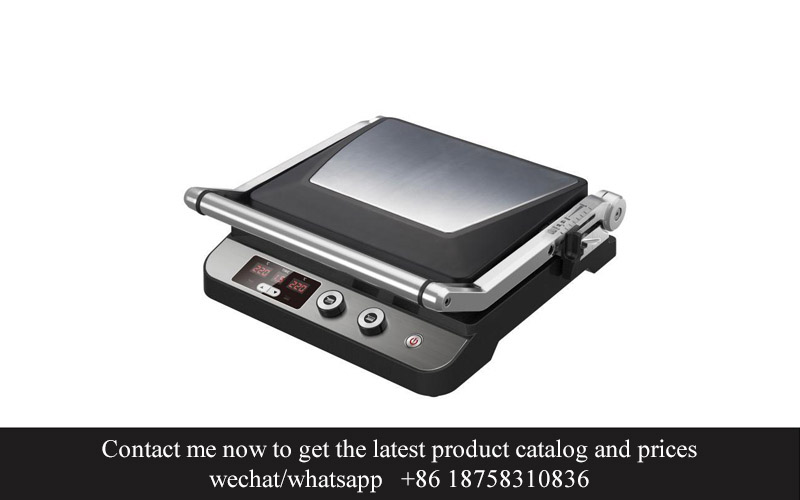
In a world where culinary experiences are evolving rapidly, the kitchen appliance industry is continually pushing boundaries to cater to the diverse tastes and preferences of consumers. Among these innovations, air fryers have emerged as a game-changer, offering a healthier alternative to traditional frying methods. As the market for air fryers expands, the role of custom mold making has become increasingly pivotal in shaping the future of these appliances. From enhancing design aesthetics to optimizing functionality, the art of mold making is at the forefront of revolutionizing the air fryer landscape.
The air fryer market has experienced a remarkable surge in popularity over the past decade, transforming the way consumers approach cooking and health. Once a niche product, air fryers have now become a staple in many kitchens worldwide, offering a healthier alternative to traditional frying methods. This evolution has been driven by a combination of factors, including increased awareness of health and wellness, technological advancements, and changing consumer preferences.
With the rise of the health-conscious consumer, there’s been a significant shift towards cooking methods that reduce fat content without compromising on taste. Air fryers use a circulating hot air process to cook food, which requires less oil than traditional frying. This has made them a favorite among those looking to enjoy their favorite fried foods with a lighter touch on their waistlines.
The market for air fryers has expanded rapidly, with numerous brands and models flooding the shelves. From compact countertop units to larger, multi-functional appliances, the variety is vast. This diversity caters to different consumer needs, whether it’s a single-person household or a family looking for a versatile cooking solution.
Innovation has been a key driver in the air fryer market. Manufacturers have been quick to adapt and improve upon the technology, introducing features like programmable settings, temperature control, and even built-in timers. These enhancements have not only made air fryers more user-friendly but also more efficient, saving time and energy.
Another factor contributing to the market’s growth is the integration of smart technology. Many modern air fryers come with Wi-Fi capabilities, allowing users to control their appliances remotely via smartphone apps. This connectivity has opened up new possibilities for recipes and cooking methods, as well as the ability to monitor and adjust cooking parameters on the go.
The air fryer market is also influenced by cultural trends. For instance, the popularity of Asian cuisine has led to the development of air fryers that can mimic the texture of deep-fried dim sum or tempura without the oil. Similarly, the Mediterranean diet’s emphasis on olive oil has spurred the creation of air fryers that can achieve a similar golden crispness with less oil.
Furthermore, the sustainability movement has played a role in shaping the air fryer market. As consumers become more environmentally conscious, they are seeking appliances that are energy-efficient and have a lower carbon footprint. Air fryers fit this bill perfectly, as they use significantly less energy than conventional ovens and fryers.
Despite the growth, the market is not without its challenges. Some consumers are still hesitant to adopt air fryers due to concerns about the quality of the food and the initial cost. There’s also the issue of consumer education, as many people may not be aware of the full range of benefits that air fryers offer.
As the air fryer market continues to expand, manufacturers are focusing on addressing these concerns. They are working to improve the taste and texture of air-fried foods, as well as making the appliances more affordable and accessible. Additionally, there’s a growing trend towards eco-friendly and sustainable products, which could further boost the market’s appeal.
In conclusion, the air fryer market has seen a remarkable transformation, driven by health trends, technological innovation, and cultural shifts. As the market evolves, it’s likely that we’ll see even more innovative designs and features that cater to a broad range of consumer needs. The air fryer’s journey from a niche product to a kitchen staple is a testament to the power of innovation and the changing landscape of consumer preferences.

In the ever-evolving landscape of kitchen appliances, the air fryer has emerged as a game-changer, offering consumers a healthier alternative to traditional frying methods. At the heart of this transformation lies the role of OEM mold making in air fryer production. These specialized molds are not just tools for manufacturing; they are the architects of innovation, shaping the future of cooking technology.
The process begins with the design phase, where engineers and designers conceptualize the air fryer’s form and function. It is here that OEM mold making plays a pivotal role. These molds are crafted with precision to ensure that every component of the air fryer fits seamlessly together, from the outer casing to the inner basket. The intricacy of these molds is a testament to the complexity of the modern air fryer, which combines both aesthetic appeal and practicality.
Mold making for air fryers is a meticulous process that involves several key steps. The first is the creation of a prototype, which serves as a blueprint for the mold. This prototype is then used to develop a detailed 3D model, taking into account the necessary dimensions and specifications. The design must account for the air fryer’s ability to circulate hot air efficiently, ensuring even cooking without the need for excessive oil.
Once the design is finalized, the mold-making process begins in earnest. This involves the use of advanced materials and techniques to create a mold that can withstand the high temperatures and pressures of production. Aluminum is a common choice for its durability and heat resistance, but other materials like steel and plastic are also used depending on the specific requirements of the design.
The mold itself is a marvel of engineering. It is typically composed of two halves, the core and the cavity, which come together to form the shape of the air fryer. The core is the part that defines the internal structure, while the cavity is where the material is injected to create the outer shell. The quality of the mold directly impacts the quality of the final product, making it a critical component in the production process.
In the hands of skilled mold makers, these molds are not just tools; they are pieces of art. The precision with which they are crafted ensures that each air fryer produced will have the same level of quality. The molds must be able to maintain their shape and integrity throughout the injection molding process, which can involve thousands of cycles without wearing down.
The role of OEM mold making extends beyond just the physical production of the air fryer. It also plays a crucial role in the product’s lifecycle. Molds are often designed to be reusable, which means they can be used to produce multiple batches of air fryers over time. This not only reduces production costs but also minimizes waste.
Moreover, mold making for air fryers must also consider the manufacturing process’s efficiency. The molds are designed to facilitate quick and easy production, reducing downtime and increasing throughput. This is particularly important in today’s fast-paced consumer market, where demand for new and innovative kitchen appliances is high.
Another aspect of mold making that cannot be overlooked is the cost factor. While high-quality molds can be expensive to produce, they ultimately save money in the long run by reducing defects and increasing the number of products that can be produced before the mold needs to be replaced. This cost-effectiveness is a significant advantage for manufacturers looking to keep their products competitive.
Additionally, the molds used in air fryer production must be adaptable to changes in design. As consumer preferences shift and new features are introduced, molds can be modified to accommodate these changes without starting from scratch. This flexibility is essential for companies that want to stay ahead of the curve in a market that is constantly evolving.
In conclusion, OEM mold making is an indispensable part of air fryer production. It is through these molds that the intricate designs and innovative features of modern air fryers come to life. The precision, durability, and adaptability of these molds are key factors in ensuring that air fryers meet the high standards expected by consumers. As the air fryer market continues to grow, the importance of skilled mold makers will only increase, driving the industry forward with each new design and technological advancement.
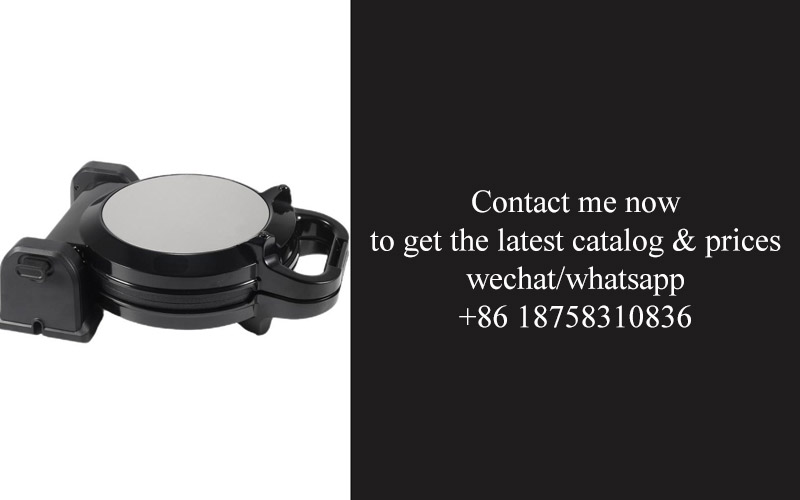
In the ever-evolving world of kitchen appliances, air fryers have emerged as a favorite among health-conscious consumers seeking a healthier alternative to traditional frying. The design of these appliances has seen remarkable advancements, driven in large part by the innovative work of Original Equipment Manufacturers (OEMs) specializing in mold making. Here’s a closer look at the innovative designs that are shaping the air fryer market:
Smart Temperature Control Systems: One of the standout features in modern air fryers is the implementation of precise temperature control. OEMs have developed molds for intricate heating elements that can maintain temperatures with pinpoint accuracy, allowing for optimal cooking without the need for constant monitoring. This has not only made air frying more convenient but also more effective in preserving the nutritional value of food.
Space-Saving and Compact Designs: Space is often a premium in modern kitchens, especially in urban settings. OEMs have crafted molds that enable air fryers to be compact yet functional. These appliances can now fit into smaller drawers or shelves, making them perfect for apartment dwellers or anyone looking to maximize kitchen space.
Multiple Cooking Functions: Air fryers have expanded beyond just air frying, thanks to molds that allow for the creation of multi-functional units. With these designs, users can now enjoy various cooking methods such as roasting, grilling, and even baking. The versatility is achieved through molds that can accommodate different types of cooking elements and accessories.
Programmable Settings and Presets: For those who want the convenience of a smart kitchen, molds have been designed to include programmable settings and presets. These features allow users to set cooking times and temperatures for different types of food, making it easy to cook a variety of meals with a single appliance.
Improved Accessory Compatibility: The molds used in the production of air fryers now include slots and mounts for various accessories, such as rotisseries and baskets. This means that users can customize their cooking experience with different attachments, enhancing the functionality of the appliance.
Energy Efficiency: With rising energy costs, OEMs have focused on creating molds for more energy-efficient air fryers. These appliances are designed to use less power while still achieving the same cooking results, which is a significant draw for environmentally conscious consumers.
User-Friendly Interfaces: The molds used to create the control panels of air fryers have evolved to include intuitive interfaces. These interfaces are often touch-sensitive and provide clear, easy-to-read displays. Users can now navigate through cooking modes and settings with a simple tap or swipe, thanks to these innovative molds.
Safety Features: Safety is paramount in kitchen appliances, and molds have been developed to include features such as cool-touch surfaces and automatic shut-offs. These designs protect users from burns and prevent the appliance from overheating, reducing the risk of accidents.
Aesthetic Improvements: The aesthetic appeal of air fryers has also been enhanced through the use of molds that allow for sleeker, more modern designs. These appliances now come in a variety of colors and finishes, making them not just functional but also a stylish addition to any kitchen.
Customizable Molds for Specialized Needs: For brands targeting niche markets, OEMs offer customizable molds that can create air fryers tailored to specific cooking styles or cultural preferences. This level of customization is only possible through advanced mold making techniques that can accommodate intricate design changes.
In summary, the molds used in air fryer production are at the heart of the innovation that drives the industry forward. From temperature control and space-saving designs to multi-functional capabilities and energy efficiency, the role of mold making in shaping the air fryer market is undeniable. As consumers continue to seek out healthier and more convenient cooking solutions, OEMs are responding with innovative designs that not only meet but exceed expectations.
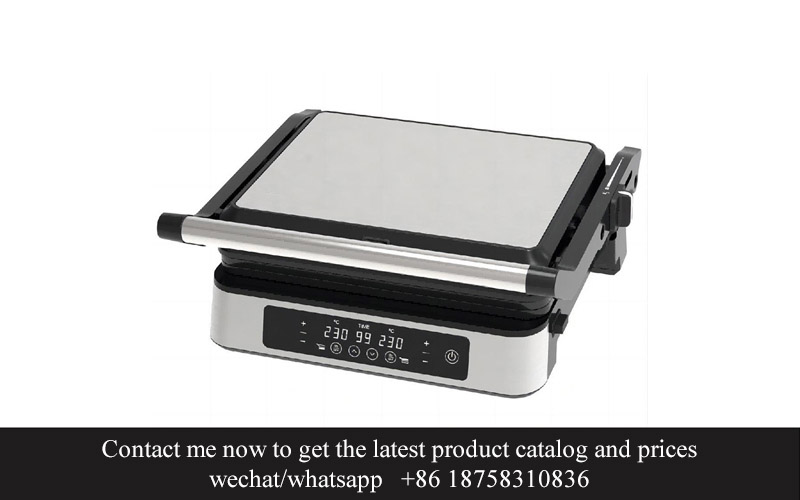
In the competitive landscape of kitchen appliances, the role of custom mold making for brands is pivotal. It’s not just about creating a product; it’s about crafting a story that resonates with consumers. Here’s how custom mold making can elevate a brand’s position in the market:
Unique Brand IdentityCustom molds allow brands to forge a distinct identity. Each design, from the sleek lines of the air fryer body to the intricate details of its controls, speaks volumes about the brand’s commitment to quality and innovation. This uniqueness can set a brand apart in a sea of similar products.
Enhanced Product FunctionalityThe design of an air fryer is not just about aesthetics; it’s about how well it functions. Custom molds enable engineers to integrate specific features that enhance the user experience. This could include ergonomic handles, intuitive interfaces, or innovative cooking mechanisms that make the appliance more user-friendly.
Cost-Effective ProductionWhile custom molds may seem like an investment, they can lead to significant cost savings in the long run. By designing molds that optimize material usage and production processes, brands can reduce waste and lower production costs. This efficiency can be passed on to consumers, making the product more accessible.
Customization for Market DemandsThe kitchen appliance market is diverse, with different regions and consumer groups having varying preferences. Custom mold making allows brands to cater to these specific needs. Whether it’s a smaller, more compact air fryer for urban apartments or a larger, more robust model for families, customization ensures that the product meets the demands of the target market.
Quality Control and ConsistencyHigh-quality molds ensure that every air fryer produced is consistent in design and performance. This level of quality control is crucial for maintaining brand reputation. Consumers are more likely to trust a brand that delivers reliable, durable products, thanks to the precision of custom molds.
Innovation and Future-ProofingThe ability to create custom molds is a gateway to innovation. Brands can experiment with new materials, shapes, and features that push the boundaries of what’s possible in air fryer design. This not only keeps the brand at the forefront of technological advancements but also future-proofs the product against obsolescence.
Brand DifferentiationIn a market saturated with similar products, differentiation is key. Custom molds can help brands create products that stand out, not just in terms of design but also in terms of the experience they offer. This differentiation can be a powerful tool in marketing and sales strategies.
Consumer Engagement and LoyaltyWhen consumers see a brand investing in unique and high-quality products, it fosters a sense of loyalty. Custom mold making allows brands to create products that are not just functional but also a point of pride for the consumer. This engagement can lead to repeat purchases and positive word-of-mouth referrals.
Sustainability and Eco-Friendly DesignsCustom mold making can also be used to create air fryers that are more sustainable. By designing products that are easier to disassemble and recycle, brands can appeal to environmentally conscious consumers. This not only aligns with global sustainability trends but also positions the brand as a responsible corporate citizen.
Global Market ExpansionAs brands look to expand into new markets, custom mold making can be a key factor in adapting products to local preferences. Whether it’s adjusting the size to fit kitchen layouts or incorporating features that are popular in specific regions, custom molds can help brands navigate the complexities of international markets.
In essence, custom mold making is not just a production process; it’s a strategic tool that can drive brand growth, enhance product quality, and create a lasting connection with consumers. By investing in custom molds, brands can create a legacy of innovation and excellence in the kitchen appliance industry.

In the ever-evolving landscape of kitchen appliances, the role of mold making in air fryer production cannot be overstated. It’s the backbone of creating custom and innovative designs that resonate with consumers. Here’s a closer look at some of the cutting-edge techniques shaping the future of mold making:
High-Precision CNC MachiningThe precision of Computer Numerical Control (CNC) machining is pivotal in mold making. This process uses computer software to control machine tools, ensuring that every detail of the mold is replicated with exacting precision. The result is a mold that can produce air fryers with intricate designs and seamless finishes.
Advanced 3D Printing3D printing has revolutionized the mold making industry by allowing for the creation of complex geometries that were once impossible with traditional methods. This technology uses digital models to fabricate molds layer by layer, providing designers with the flexibility to experiment with new shapes and structures.
Metal Injection Molding (MIM)Metal Injection Molding is a process that combines metal powders with binders to form a feedstock. This material is then injected into a mold, where it hardens and is sintered to remove the binder, leaving behind a high-strength metal part. MIM is ideal for creating intricate air fryer components that require both strength and precision.
Aluminum and Titanium AlloysThe choice of materials in mold making is crucial for the longevity and performance of the air fryers they produce. Aluminum and titanium alloys are increasingly popular due to their lightweight nature, high thermal conductivity, and resistance to corrosion. These materials are perfect for molds that need to withstand high temperatures and pressures.
Injection Molding SimulationBefore a mold is even built, engineers use simulation software to predict its performance. This allows for the optimization of the mold design before physical production begins. By simulating the injection process, potential issues such as air traps, sink marks, and warping can be identified and corrected early on.
Sustainable Mold Making PracticesAs environmental concerns grow, sustainable mold making practices are becoming more prevalent. This includes the use of recycled materials for molds, energy-efficient manufacturing processes, and the reduction of waste. These practices not only benefit the environment but also contribute to a brand’s green image.
Automated Inspection and Quality ControlAutomated inspection systems are integrated into the mold making process to ensure the highest quality standards. High-resolution scanners and vision systems can detect even the smallest imperfections in the mold, preventing defects in the final product.
Collaboration with Materials ScienceThe development of new materials is a collaborative effort between mold makers and materials scientists. This partnership leads to the creation of specialized alloys and plastics that offer unique properties for air fryer components, such as heat resistance, durability, and flexibility.
Precision Machining for Complex ShapesMolds for air fryers often require complex shapes to achieve the desired functionality and aesthetics. Advanced machining techniques, such as 5-axis milling and waterjet cutting, allow for the creation of these intricate shapes with exceptional accuracy.
Rapid PrototypingRapid prototyping is a technique that enables the quick creation of a physical model of a mold. This is particularly useful for testing new designs and getting feedback before investing in full-scale production. It helps in refining the mold design and reducing the time to market.
Continuous Improvement in Mold DesignThe mold making industry is constantly evolving. Continuous improvement initiatives focus on enhancing the efficiency and effectiveness of mold designs. This includes the development of new mold materials, coatings, and surface treatments that improve the mold’s performance and lifespan.
Customization for Different MarketsDifferent markets around the world have unique preferences when it comes to kitchen appliances. Mold making allows for customization to cater to these specific needs, whether it’s adapting to local cooking habits, incorporating cultural motifs, or ensuring compliance with regional safety standards.
In conclusion, the techniques employed in mold making are integral to the production of innovative air fryers. The combination of advanced technologies, sustainable practices, and a commitment to quality ensures that the molds produced are not just functional but also capable of pushing the boundaries of what’s possible in kitchen appliance design.
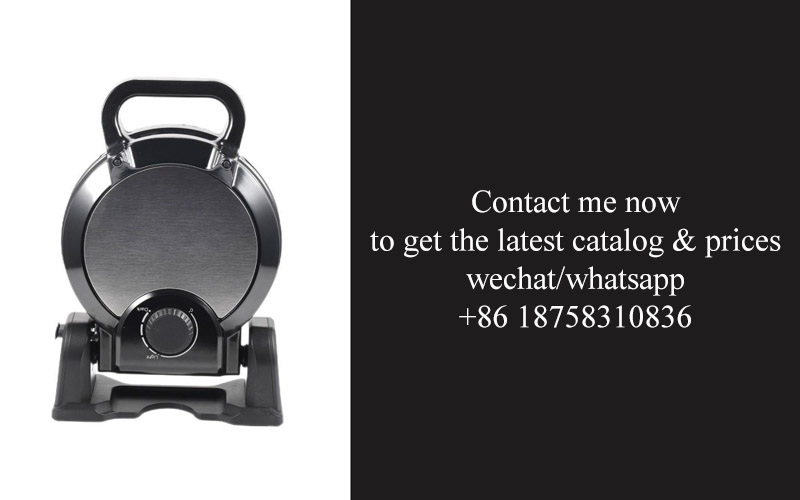
In the realm of OEM air fryer production, there are several notable case studies that showcase the success of custom mold making services. These projects not only highlight the importance of innovative design but also demonstrate how custom molds can transform a standard product into a market leader.
A leading kitchen appliance brand sought to revitalize its air fryer lineup with a sleek, modern design that appealed to health-conscious consumers. The team turned to a specialized mold-making company for a custom solution. The mold experts worked closely with the design team to create a mold that would produce air fryers with a unique, contoured shape and a durable, scratch-resistant surface. The end result was a product that not only looked cutting-edge but also performed exceptionally well, leading to a significant increase in sales and brand recognition.
Another example involves a small startup that wanted to enter the air fryer market with a product that stood out from the competition. They partnered with an OEM mold maker to develop a fryer with a compact, space-saving design, perfect for small kitchens and dorm rooms. The custom mold allowed the startup to create a product that was not only visually appealing but also functionally efficient. The startup’s air fryer quickly gained a loyal following, thanks to its innovative design and the quality assurance provided by the mold-making process.
A global manufacturer of air fryers faced the challenge of creating a product that could cater to both high-end consumers and budget-conscious shoppers. They turned to a mold-making service that could deliver both precision and cost-effectiveness. The custom molds were designed to produce a range of air fryers, from entry-level models to premium versions with advanced features. This approach allowed the manufacturer to expand its product line while maintaining consistent quality across all price points. The diverse product portfolio became a key differentiator in the market, boosting the brand’s reputation and market share.
A major electronics company ventured into the kitchen appliance sector with a line of smart air fryers. The mold-making service they collaborated with had to ensure that the molds could accommodate the integration of advanced technology, such as touchscreens and connectivity options. The complex molds were crafted with intricate details to ensure the seamless integration of these features. The resulting smart air fryers were not only a hit with tech-savvy consumers but also with those who appreciated the convenience and health benefits of air frying. The molds played a critical role in the success of this product launch.
In one case, a brand needed to differentiate its air fryer with a unique feature that was not available in the market. The custom mold allowed them to design and produce a fryer with a built-in, adjustable temperature control system. This innovation set their product apart and was a major selling point. The molds were precision-engineered to ensure that the temperature control mechanism functioned flawlessly, contributing to the product’s overall success.
Another brand focused on sustainability and environmental responsibility. They wanted to create an air fryer made from recycled materials, and they needed molds that could handle the unique properties of these materials. The mold-making service provided molds that were both eco-friendly and durable, enabling the brand to offer a product that was not only innovative but also ethically produced. This commitment to sustainability resonated with consumers, leading to a strong market reception and positive brand image.
These case studies illustrate the transformative power of custom mold making in the air fryer industry. From sleek designs to advanced features, and from sustainability to cost-effectiveness, custom molds have been instrumental in turning OEM air fryer projects into market successes. The ability to create unique, high-quality products has not only driven sales but has also solidified the positions of these brands in a highly competitive market.

The air fryer market has seen a surge in demand, with consumers seeking healthier alternatives to traditional frying methods. Understanding the latest market trends and consumer preferences is crucial for brands looking to innovate and capture this growing market segment.
In recent years, there’s been a noticeable shift towards compact and sleek designs, as consumers prefer kitchen appliances that not only perform well but also look good on their countertops. This trend has influenced the design of air fryers, with manufacturers focusing on creating units that are not only functional but also aesthetically pleasing.
Smart technology integration has also become a key factor in consumer preference. Customers are increasingly interested in air fryers that offer connectivity, allowing them to control their appliances remotely through smartphones or smart home systems. This convenience factor is driving the demand for air fryers with built-in Wi-Fi capabilities and apps that provide a range of cooking functions and recipes.
Health consciousness is another driving force in the market. As people become more aware of the nutritional content of their food, there’s a growing preference for air fryers that allow for cooking with minimal oil. This focus on healthier cooking methods has led to the development of air fryers with adjustable temperature settings and features that optimize fat reduction.
Sustainability is a topic that’s gaining traction, both environmentally and in consumer awareness. Brands that can offer air fryers made with sustainable materials or that have a lower carbon footprint are likely to appeal to eco-conscious consumers. This could include using recycled plastics, ensuring energy-efficient designs, or emphasizing the appliance’s longevity and repairability.
Portability is becoming a significant consideration, especially for consumers with smaller kitchens or those who enjoy cooking outdoors. Air fryers that are lightweight and easy to transport are increasingly popular, as they offer the flexibility to cook a variety of foods in a space-saving manner.
The rise of health-focused diets, such as veganism and keto, has also influenced the design of air fryers. Brands are now creating models that cater to these specific dietary needs, offering features that make it easier to cook a wide range of vegan and keto-friendly recipes.
Moreover, there’s a trend towards versatility in kitchen appliances. Air fryers that can serve multiple purposes, such as dehydrating, roasting, or even serving as an oven, are becoming more sought after. Consumers are looking for appliances that can do more with less, reducing the number of kitchen gadgets they need to purchase.
In conclusion, the air fryer market is evolving rapidly, with a focus on design, technology, health, sustainability, and versatility. Brands that stay attuned to these trends and preferences will be well-positioned to meet the demands of the modern consumer. By understanding what drives purchasing decisions, companies can develop air fryers that not only meet but exceed consumer expectations.
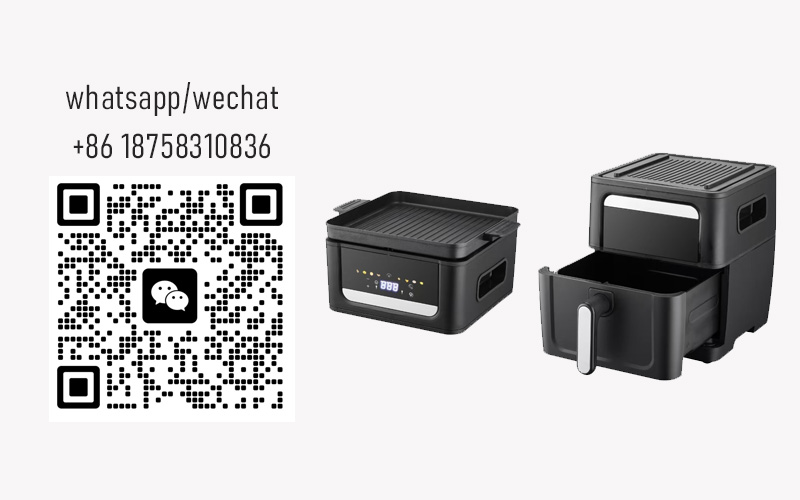
The evolution of air fryer technology has brought about a myriad of innovative designs, reshaping the way consumers approach healthy cooking. From sleek and compact models to those with advanced features, the air fryer market is continually evolving. Here are some of the cutting-edge designs that have captured the public’s attention.
Modern air fryers come with various innovative features that cater to different cooking preferences and health-conscious consumers. For instance, some models are equipped with a digital touch screen interface, offering intuitive control over cooking temperatures and times. This not only simplifies the cooking process but also allows users to achieve perfect results with ease.
The ability to customize cooking modes and settings has also become a staple in many new air fryers. Features like air crisp, air bake, and even dehydrating functions have expanded the capabilities of these appliances beyond their traditional frying roles. These designs often include smart sensors that monitor internal temperatures and humidity, ensuring consistent cooking throughout the process.
Another significant design trend is the integration of wireless connectivity. With the rise of smart home technology, air fryers can now be controlled through smartphones or tablets, allowing users to preheat or monitor cooking progress from anywhere. This connectivity also enables the appliances to receive software updates and new recipes directly to the user interface.
Designers have also focused on creating more compact and space-saving air fryers. These mini appliances are perfect for small kitchens or individuals who prefer a more streamlined cooking experience. The compact size doesn’t compromise on functionality; these air fryers are still capable of producing delicious and healthy meals.
Safety has also been a focal point in recent air fryer designs. Many models now include features like automatic shut-off to prevent overheating and accidents. Additional safety features like cool-touch exteriors and child locks add an extra layer of security, making air fryers a safer choice for families.
In terms of materials, air fryer manufacturers have been experimenting with new materials to enhance durability and aesthetics. From stainless steel bodies that offer a sleek and modern look to non-stick coatings that make cleaning a breeze, these materials contribute to the overall appeal of the appliance.
The demand for eco-friendly and sustainable products has also influenced design choices. Air fryers with energy-efficient features, such as LED lighting and timers that can automatically turn off the appliance after a set period, are becoming more popular. These designs not only reduce energy consumption but also minimize waste, aligning with consumer values regarding environmental responsibility.
Brands are also exploring modular design concepts, where components can be easily replaced or upgraded. This approach allows for long-term investment in the appliance and can help extend the product’s lifespan, reducing the environmental impact of disposal.
In conclusion, the innovative designs in air fryers have not only made healthy cooking more accessible but have also expanded the appliance’s functionality, making it a versatile addition to any kitchen. As technology continues to advance, we can expect even more innovative designs that cater to a wider range of consumer preferences and needs.
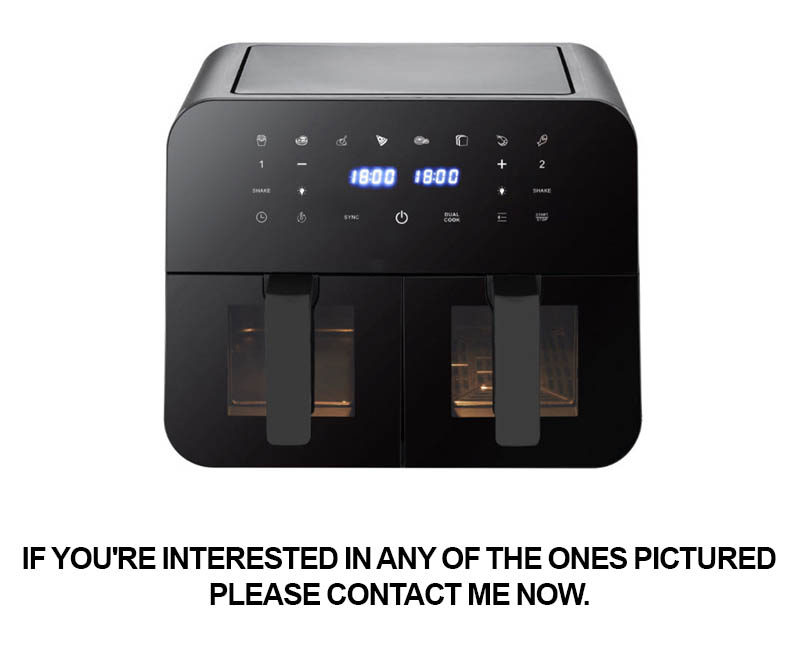
As the world becomes increasingly health-conscious, the demand for air fryers has surged, transforming the kitchen landscape. Brands are constantly seeking innovative ways to cater to consumer preferences and stand out in a competitive market. Embracing innovation in air fryer molding is not just about creating a product; it’s about crafting a narrative that resonates with customers. Here are some key insights into the evolving landscape of air fryer molding, reflecting on how it has shaped the industry and where it might be heading.
The evolution of air fryer molds has allowed for the integration of smart technology, offering users an unparalleled cooking experience. Molding has enabled the creation of air fryers that not only reduce cooking times and energy consumption but also provide a plethora of health benefits, such as lower fat content and minimal oil usage.
One significant trend in air fryer molding is the focus on sustainability. Brands are increasingly adopting eco-friendly materials and designing products that are easier to recycle at the end of their lifecycle. This shift reflects a broader consumer movement towards responsible consumption and production.
Custom molds have opened up new possibilities in design and functionality. We’ve seen the emergence of air fryers that can be stacked, allowing for more efficient use of kitchen space. Molding techniques have also enabled the development of air fryers with unique features, such as digital temperature controls, timer settings, and even smart connectivity, making them as much a kitchen gadget as a cooking appliance.
The precision required in molding for air fryers is a testament to the industry’s commitment to quality. From the intricate details of the cooking chamber to the sleek, ergonomic handles, every aspect of an air fryer is meticulously crafted to ensure durability and ease of use. This level of attention to detail is what sets apart a high-quality air fryer from a generic one.
The rise of personalized experiences in kitchen appliances is another result of innovative mold making. Brands are now offering customized air fryers that cater to specific dietary needs, such as gluten-free, low-carb, or vegan-friendly models. These specialized appliances not only meet individual preferences but also address niche markets within the broader consumer base.
The integration of safety features through mold design is a critical aspect of modern air fryer manufacturing. With the help of molds, air fryers can now come equipped with anti-overheat sensors, non-slip bases, and child-safe locking mechanisms. These features are not just a marketing ploy but are essential in ensuring user safety and preventing accidents.
The competitive nature of the market has led to rapid advancements in air fryer technology. Brands are investing heavily in research and development to push the boundaries of what’s possible with air fryer molds. This innovation has sparked a surge in new product releases, each promising to offer something unique or better than the last.
As the market evolves, the importance of user experience cannot be overstated. Molding techniques have allowed for the creation of air fryers that are not only functional but also aesthetically pleasing. The sleek, modern designs of these appliances appeal to consumers who want their kitchen to reflect their personal style and values.
Looking ahead, the future of air fryer mold making is poised to be even more exciting. We can expect to see further integration of IoT (Internet of Things) technology, allowing air fryers to be controlled remotely and to sync with other kitchen appliances. The potential for customization is vast, with 3D printing techniques potentially allowing for on-demand production of molds, catering to the most specific of user needs.
Brands that embrace innovation in air fryer molding will not only stay ahead of the curve but will also foster a loyal customer base. By continuously seeking to improve the cooking experience and addressing consumer concerns, these brands are not just selling a product; they are selling a lifestyle.
In conclusion, the molding process for air fryers has become a cornerstone of the industry, driving innovation and shaping the way we interact with our kitchen appliances. As technology advances and consumer expectations rise, the future of air fryer molding looks promising, with endless possibilities for enhancing our culinary experiences and the sustainability of our homes.